So many different elements come into play when making a film.
A cast with perfect chemistry, an inspirational director, and thatŌĆÖs before we mention costumes, lighting and sound.
But what about the world that story takes place in? Sometimes scripts call for lavish reproductions of ancient cities, everyday life in the near future, or the fantasy land of a literary classic. ┤¾Ž¾┤½├Į Bitesize takes a look at some of the most remarkable sets in the history of film.
Metropolis: The future told with models and mirrors
In 1927, Austrian filmmaker Fritz Lang wanted to show a future world crammed with towering buildings, flying machines, traffic-packed roads and exhausting factories.
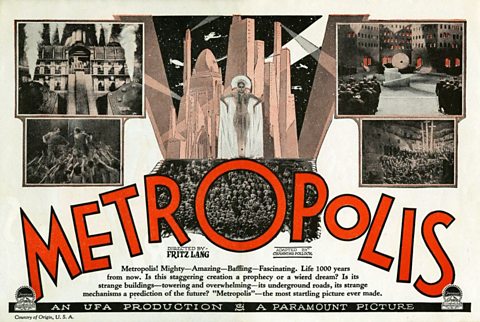
Set approximately a century ahead of 1927, the science-fiction world of Metropolis sees the rich and wealthy in the highest sections of the city, breathing the cleanest air. The workers lived in its dreary depths.
Otto Hunte was the art director who helped turn LangŌĆÖs ideas into reality, based on the directorŌĆÖs first glimpse of New York city in 1924. HunteŌĆÖs team was inspired by the latest advances in architecture, from movements including Bauhaus, Art Deco and expressionism.
Some sets, such as the factory, were full scale. The cityscape - dominated by one huge structure representing the From the Bible. The Tower of Babel was a structure said to exist in Babylonia, and the source of the diversity of languages spoken across the world. - was a model. Cinematographer Eugen Sch├╝fftan devised a method using mirrors where the actors appeared to be performing on the smaller sets.
Cleopatra: When Rome came home
In the early 1960s, Pinewood Studios in Buckinghamshire was almost home to Cleopatra, one of the most expensive films ever made. Elizabeth Taylor starred as the Egyptian queen.

The Pinewood sets were up against the bleaker elements of the British weather. Plaster statues deteriorated while tropical plants used as decoration never lasted long and were always in need of replacement. Elizabeth Taylor also became seriously ill while in the UK, returning to the USA for several months to recover. New sets were built at Cinecitt├Ā studios, Rome, to film in warmer weather.
Constructing the Roman Forum in Italy was a challenge. The set was so big it led to a temporary shortage of building materials in the country - and was three times larger than the original forum.
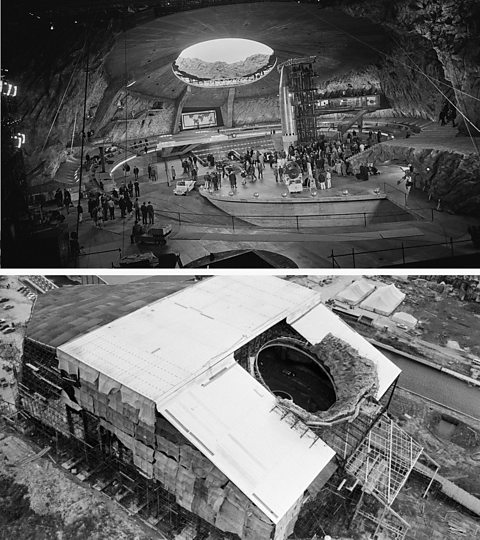
You Only Live Twice: Building a volcano in Buckinghamshire
You Only Live Twice was the fifth film in the James Bond series, starring Sean Connery as 007.
Released in 1967, it was set mainly in Japan. In Ian FlemingŌĆÖs novel, which formed the basis of the film, the villain BlofeldŌĆÖs headquarters was a coastal castle. A location visit revealed Japan does not have castles by the sea - but the production team did spot some volcanoes, which became BlofeldŌĆÖs new lair.
The volcano interior was built at Pinewood and had to be big. Very big. Designer Ken Adam recalled in an interview featured on the official 007 website that: ŌĆ£I knew it was going to be a gigantic set but I had no idea. I quoted about a million dollars.ŌĆØ
The finished lair was 200ft (60m) wide and 55ft (16m) high, rising to 125ft (38m). The volcano crater poked through the roof of the studio. The mammoth space required almost every available light at Pinewood to illuminate it.

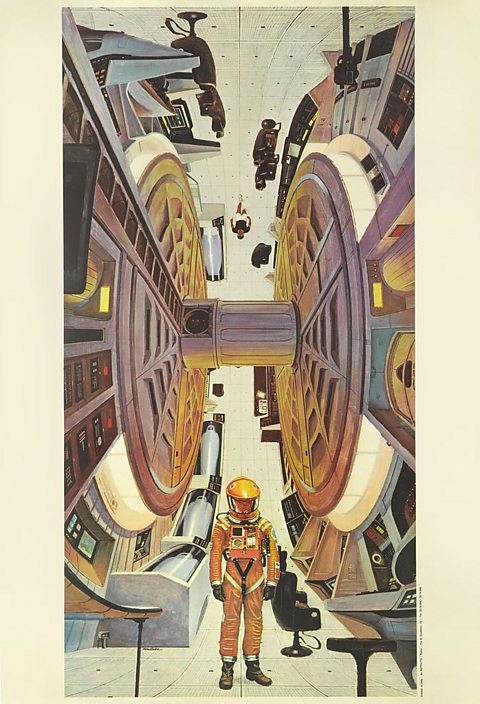
2001: A serious look into the future
Director Stanley Kubrick was renowned for his attention to detail.
This wasnŌĆÖt confined to the number of takes he wanted from his cast to get the perfect performance - it related to other elements of the production, such as set design.
The 1968 film 2001: A Space Odyssey required sets showing life and travel 33 years in the future, with spacecraft consultants who had worked with NASA brought in to make the technology appear as realistic as possible. Kubrick himself was involved in the design aspect, choosing furniture from designers such as Eero Saarinen and Olivier Mourgue, whose innovative shapes and structures he felt evoked the right feel for the film he wanted to make. Another famous designer, Arne Jacobsen, made cutlery that was used by astronauts in the film, although not specifically for Kubrick's project.
One of the most complex sets in the film was a giant centrifuge, 38 feet (12m) in diameter and 10 feet (three metres) wide. It was designed to show weightlessness in space. Built in the same way as a ferris wheel, different elements of the set were fixed down and could be rotated around actors. It was filmed in a way that made the actors look as though they were walking past the objects instead. It wasnŌĆÖt a cheap effect - the set cost $750,000, a substantial amount in the late 1960s.

The Lord of the Rings: Homes fit for a Hobbit
Hobbiton is a town in The Shire, created by the author JRR Tolkien for his 1937 childrenŌĆÖs novel The Hobbit, reappearing in its sequel The Lord of the Rings. The hobbits Bilbo and Frodo Baggins lived at Bag End in Hobbiton, in a burrow dug into a hill.

In 1998, director Peter Jackson was preparing his adaptation of The Lord of the Rings. His team found Alexander sheep farm in the Waikato district of New Zealand. Covering 1,250 acres, it was a good match for TolkienŌĆÖs description of The Shire, with no other buildings, roads or power lines in view.
Hobbiton took shape across 12 acres of Alexander farm in early 1999, including 39 hobbit holes. This set was temporary, with some demolition attempted after filming ended in December 1999 - but enough remained of Hobbiton for guided tours to begin in 2002.
Seven years later, Jackson returned to the same spot to make The Hobbit trilogy, starring Martin Freeman. This time, 44 permanent hobbit holes were built and Hobbiton remains part of the working farm, where it has become a tourist attraction with additional features - including its own inn.
This article was published in July 2023
The UK film locations crews keep coming back to
Why you've seen the same castle in Harry Potter and Transformers
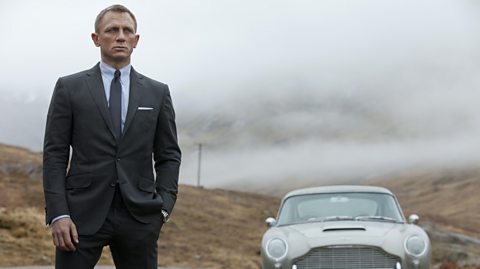
Quiz: Do you know your fictional locations?
Can you spot the correct settings for your favourite tv shows, films, books and games?
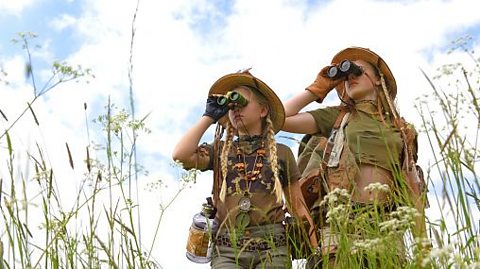
When film and TV got the future spot-on
The storytellers who predicted President Trump and the technology we have today.
